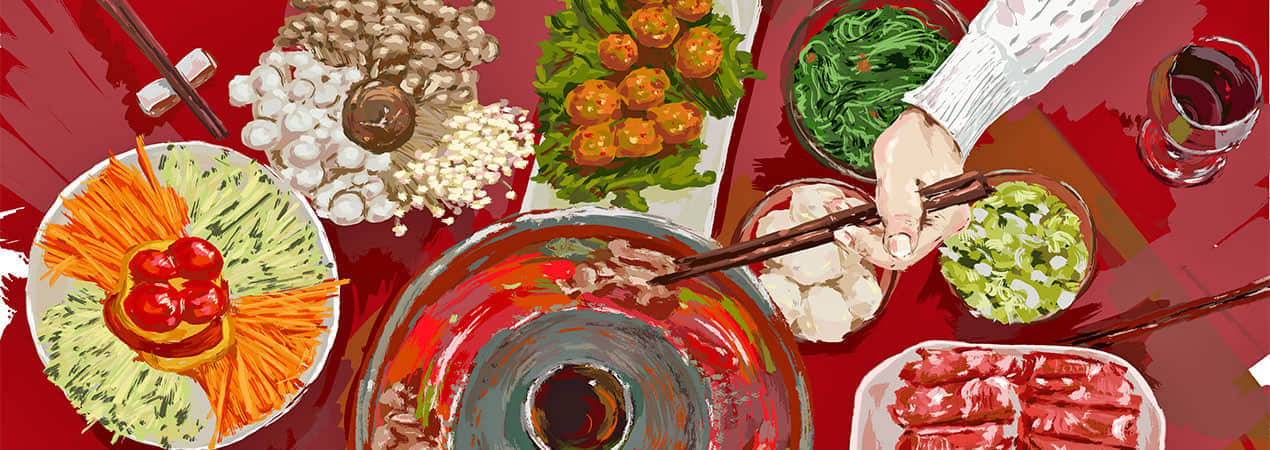20 Great Reasons To A Guide to Eating Like a Local in China
20 Great Reasons To A Guide to Eating Like a Local in China
Blog Article
Top 10 Tips For Exploring Regional Cuisines Of China
1. Learn about the Eight Culinary customsTip: Get familiar with the eight major Chinese dishes : Sichuan Cantonese Shandong Jiangsu Fujian Hunan Anhui Zhejiang. Each has its distinctive flavors, techniques, and cuisines.It aids you in planning your dining experiences by studying your tastes.Con: It's hard to recall the specifics of each dish.
2. Take advantage of local specialtiesTry to try the signature dishes of each region for example, Peking Ducks in Beijing or Shanghai as well as Hot Pots in Chengdu.Pros Cons: The experience will be authentic, and rich in culture.Cons: It may limit your options for exploring other cuisines when you are restricted to one region.
3. Be aware of regional flavorsTip Advice Sichuan food can be hot and dulling. Cantonese dishes are light, fresh and sweet. Jiangsu is delicate and sweet. Choose dishes based on your spice tolerance.Pro tip: Avoid ordering food you may not like.Con: Certain flavour profiles might require some testing.
4. Discover Street FoodExplore the local cuisine and experiment with snacks. Be adventurous and try local foods.Pro: Street foods are cheap, quick and convenient. They also give an insight into the local scene.Con: Hygiene may be a concern at times; choose vendors that have high turnover.
5. Learn Basic Dining EtiquetteTip: Learn about Chinese dining traditions, including eating meals with family members. Also, avoid cutting chopsticks with the upright position.Pro: Honors local customs and traditions, which enhances the experience of dining.Con: Takes time to understand and adapt to new manners of conduct.
6. Consult locals to get recommendationsLocals know the top restaurants or dishes are within their area. Don't hesitate to ask for assistance.The most appealing part is that you will find hidden gems, not just tourist traps.Con: Language barriers could create communication difficulties.
7. Be Open to Unfamiliar InputsExplore your imagination and discover interesting ingredients in regional cuisines. Foods that are new should be viewed with an open mind.Pro: Enhances appreciation for Chinese food culture and expands palette.Con: Some meals might not match your tastes or dietary requirements.
8. Accommodate Dietary RestrictionsTips: Learn some phrases in Mandarin to convey preferences or allergies, for example "Wo bu chi" (I don't eat meat).Pro: It will ensure that you experience a more comfortable experience.Con: Certain dishes can be restricted in terms of specific dietary restrictions.
9. Pair food and regional drinksTip: Try local beverages like Shaoxing wine from Zhejiang and tea in Fujian or baijiu from northern China.Pro: It complements the food and adds depth to the experience.Con: Strong flavors like baijiu are not for everyone.
10. Avoid OverorderingTip: Chinese food is typically served family-style So be cautious when ordering. You can also order more in case you need to.Pro: Reduces food waste and makes sure that you have the opportunity to sample a variety of dishes.Con: You might be tempted to buy too much due to the variety.
Explore the cuisines of regional regions in China: BenefitsEnjoy a wide variety of flavor methods, ingredients and techniques.Cultural Insight: Deepening your understanding of regional traditions and identities.Cost-effective: Local food and snacks can be found at reasonable prices.Memorable Experiences: Eating the most famous dishes of their region of origin can create lasting memories.Pros and Pros and Exploring regional Cuisines in ChinaHygiene Concerns. Certain street food items or smaller restaurants may not be up to international standards for cleanliness.Language Barriers: Menus and descriptions are typically only available in Mandarin. It makes it difficult to order.Unfamiliar Ingredients : Some people find certain tastes or textures hard to digest.Limitations on diet: In some regions, vegans and vegetarians as well as people with allergies to certain foods might find it difficult.Use these suggestions to appreciate the delicious and diverse variety of Chinese regional dishes as you navigate the challenges! See the top rated top Chinese food experiences for more info including a tour of China regional cuisine, explore the riChness of Chinese food, a taste of China best local foods, savor China regional food specialties, famous foods in China cities, delicious Chinese dishes to try, discover Chinese street food, Chinese food culture guide, culinary tours of China best cities, China food heritage revealed and more.
Top 10 Tips For Cultural Respect When Visiting Famous Temples In China
1. Tip: Each temple has its own rules and rituals. Always adhere to local customs. It includes bowing, offering incense, and being silent during rituals.
Pro: Shows a high degree of respect for a temple as well as its religious practices.Cons: Temple rituals and etiquette can be confusing if unfamiliar with them.2. Dress sensuallyTip: Wear conservative clothes that covers shoulders, arms, and legs. Some temples will provide scarfs, shawls, or other clothing to visitors.
Pro: Represents reverence for the sacred space and avoids offending locals.Con: This can be uncomfortable in the event of hot, and could require extra clothing.3. Be Calm and SilentTip. Maintain a quiet and peaceful manner. Particularly in prayer areas and in sacred spaces. Be quiet and refrain from loud discussions.
Pro: It preserves the sacredness of the space and is respectful of worshippers.Con: Silence could seem awkward or uncomfortable in crowds of tourists.4. Avoid Disrupting WorshippersDon't interrupt those who are meditating or praying. Let them finish their rituals.
Pro Respects the spiritual practices of other people.Con Cons: It's tempting to connect with worshipers But you should be wary of becoming distracted.5. Don't touch sacred objects.TIP: Do not touch altars, statues, or other sacred items unless specifically permitted. These objects are generally considered to be highly sacred.
Pro: Respects traditional practices, and preserves the sacredness and purity of the temple.Cons: You may be tempted to get close to the items in order to take photos or out of curiosity.6. Respect the EldersTip: In most temples, elders are revered. When interacting, be extra considerate and polite.
Pro: Honors cultural values of respecting elders.Cons: It may feel odd if you're from a society which does not value the age of its citizens.7. Take the lead from localsTip: If in doubt about what to do behaving, look at how people in the area behave and then emulate their behavior regardless of whether they're demonstrating how to make an offering or directing you to a place.
Pro: You'll fit effortlessly and ensure that you're following the correct procedures without any errors.Con: It could take a while for you to watch in order to comprehend what's happening.8. Request Permission Prior to Taking PhotosAsk permission to take photos before you do, especially in places where people are praying. Some temples may prohibit photography entirely.
Pro Respects the privacy of people as well as the sacredness of space.Con: Missing photo opportunities can be a problem especially in areas with amazing scenery.9. Don't be afraid to offer modest and respectful offeringsDon't go overboard in your offering. If you don't have the obligation to give extravagant gifts, you shouldn't.
Pro: Aligns the local customs.Cons: You might not feel confident in what you should be offering without local assistance.10. Be mindful of your actions and LanguageMaintain a calm and respectful attitude at all time. Avoid the use of inappropriate language in sacred places.
Pro: Helps create a respectful and peaceful environment for all visitors and believers.Con: While a casual or humorous approach may be intuitive, maintaining your balance and poise is essential.Chinese temples are a wonderful spot to show respect for Chinese culturePositive relationships with locals Respecting the culture of your neighbors can aid in forming positive relationships.A deeper understanding of culture: Shows an interest in studying Chinese culture and the determination to study them.A memorable experience is created by engaging respectfully with temple culture.Avoiding Mistakes : Adhering to cultural practices will help you avoid offending sacred sites or individuals. This will result in an enjoyable trip.Greater Spiritual Sensitivity: Engaging in respect can open your eyes to the practices and customs of the region, offering a deeper sense of connection.Cons of the observance of cultural customs in Chinese TemplesCultural Misunderstandings: You might misunderstand the temple etiquette or commit mistakes if you do not have the prior knowledge.Physical discomfort: Wearing modest clothes in hot weather or adhering rituals may create discomfort.You might feel restricted in your freedom if you adhere to strict guidelines (e.g. no speaking or taking photos).Time-consuming: Attending to rituals and learning about temple customs can take longer that could alter your overall schedule of sightseeing.Language Barriers. Understanding rituals and asking permission isn't easy when there's a language gap.By embracing these tips and demonstrating respect for the culture and respect for the culture, you'll not only get a a more rewarding and fulfilling experience visiting China's temples, but you'll aid in preserving the sacredness and values of these sacred sites. View the top rated taste the regional flavors of China for more info including tasty delights from China, must-try foods in China, famous foods in China cities, delicious Chinese dishes to try, famous foods in China cities, a deep dive into China food culture, discover Chinese street food, the ultimate guide to Chinese cuisine, a deep dive into China food culture, a taste of China best local foods and more.